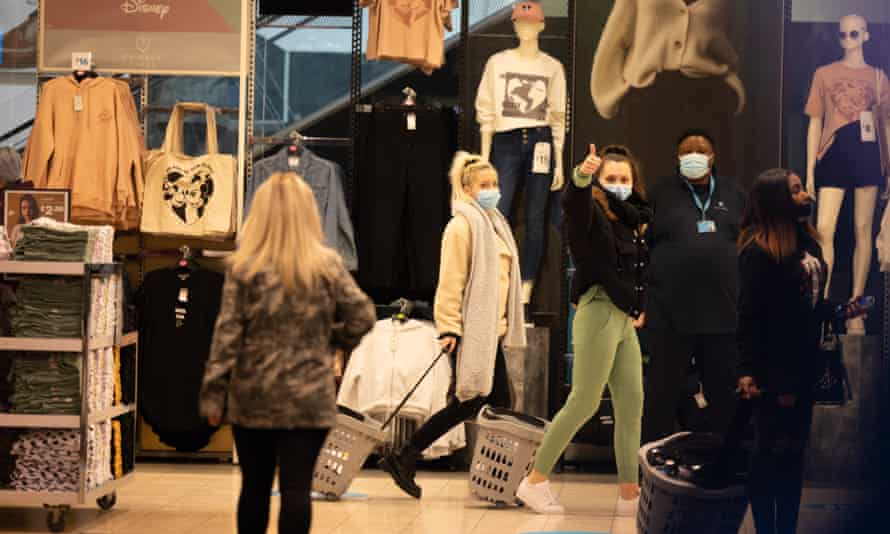Shoppers have surged back to high streets across England as fashion stores, toy shops, hairdressers and other non-essential retailers reopened their doors for the first time in more than three months.
The number of people out and about by 10am on Monday more than tripled compared with the previous Monday and was just less than 15% lower than 2019 levels, according to analysts at Springboard.
With snow flurries in some places and cold weather across the country, shopping centres reported the biggest rise in footfall followed by high streets. At retail parks, there was less of a pick-up after they enjoyed the strongest trade throughout the lockdown because of their generally larger stores, available parking and the more likely presence of food and DIY stores, which have been able to trade as essential retailers.
Shoppers queued outside Primark, sports shops, the Zara and Uniqlo chains and the department stores Selfridges and John Lewis on London’s Oxford Street early on Monday.

About 40 people queued outside Primark before its 7am opening, despite icy weather, but they were outnumbered by young people, mostly young men, waiting outside JD Sports, Footlocker and Nike Town in an effort to buy sought-after trainers to then sell online.
Diyar Cicek, 19, standing outside JD Sports as flakes of snow fell at 8am, said: “We are trying to make a little cash. No one wakes up at this time otherwise.”
Dillon Chuckisama, 19, the first in line outside Nike Town, said he had been queueing for about two hours and planned to buy up to 10 pairs of trainers that he could sell for about £50 profit a pair via Instagram. Referring to the most sought-after type of trainer, he said: “Jordans bring money and that’s what makes the world go round.”

Trainer fans also made up a large portion of the long queue that built up at Selfridges, which was almost entirely encircled by people waiting to enter its different doorways.
At Primark, shoppers said they had queued for bargains for themselves and relatives. “It’s first come first served and we didn’t want to miss out,” said Esther, 15, who had bought some pool sliders and other summer gear from the chain, which does not sell online and so has been inaccessible since December. “Everyone has missed Primark. I don’t buy online. It just comes wrong and it is a long process to send it back,” she said.
Hollie Blu, 24, and her mother, Caroline Blu, who were both carrying several Primark and Marks & Spencer bags, said they had arrived Oxford Street at 7am having walked from Elephant and Castle, about three miles away.
They were surprised there were not more queues. “I needed to get out of my house and have somewhere to go. We need something normal,” said Caroline. “But I noticed there’s quite a lot of shops not here. We wanted to got to New Look but it’s no longer there.”
Sign up to the daily Business Today email
The street still remained fairly quiet on Monday amid evidence of the devastation wrought by the pandemic on clothing retailers. Topshop’s vast flagship store on Oxford Circus was shuttered and Debenhams’ flagship down the road is also permanently closed, making up a run of nearly three blocks of boarded-up shops.
As well as empty stores from collapsed chains including Wallis, Topshop and Evans, retailers including Next and River Island have also closed Oxford Street outlets, contributing to dozens of gaps along the UK’s most famous high street.
On sidestreets, some hopeful cafes and restaurants put out tables with heaters and gazebos to tempt diners, but the icy weather meant only a handful were occupied on Monday morning.
This content first appear on the guardian
